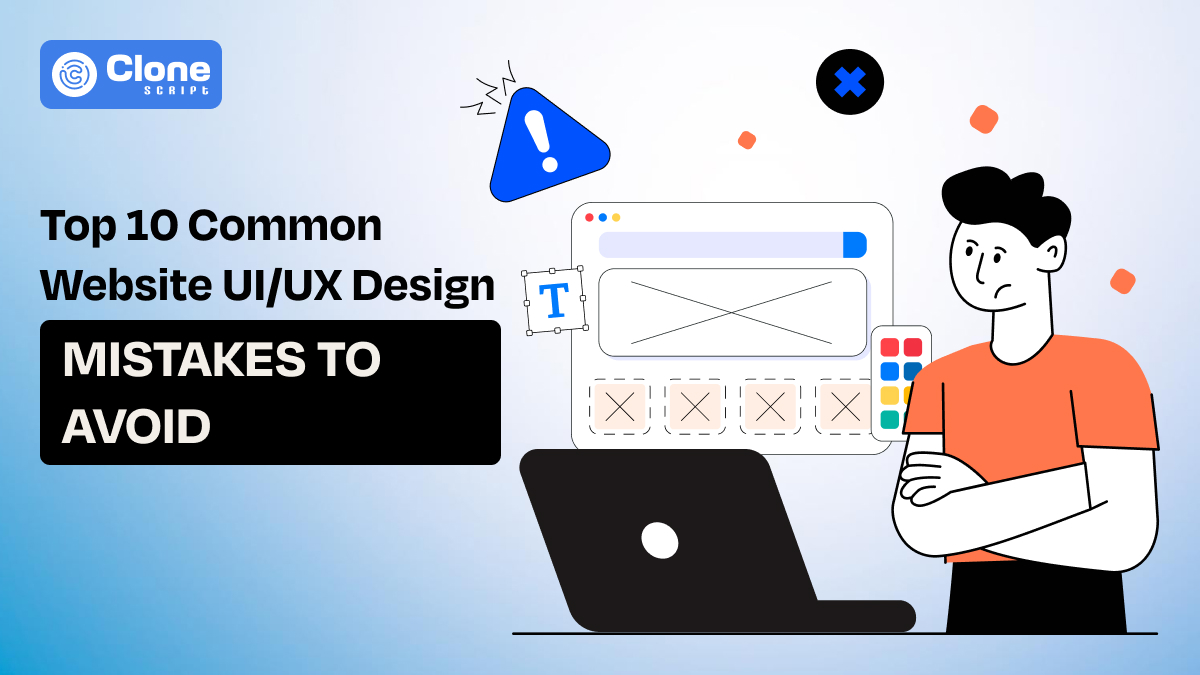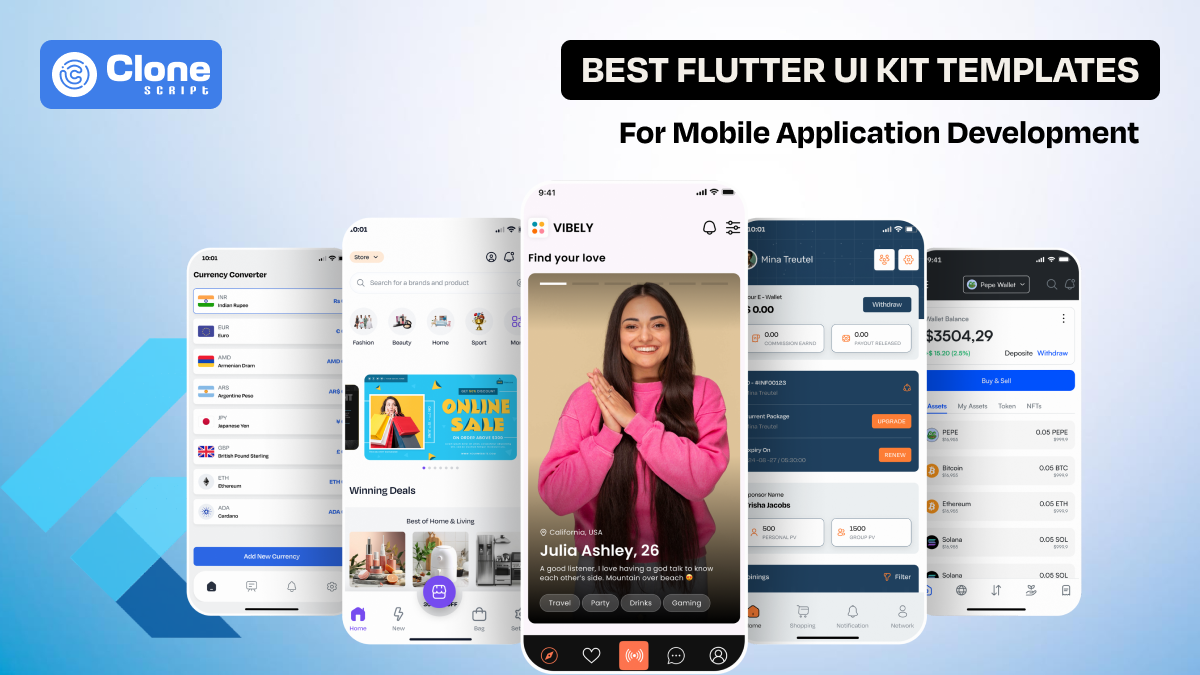Top 10 Common Website UI/UX Design Mistakes to Avoid
Imagine this: you're tasked with designing a sophisticated and user-centric website for a high-end real estate agency. Your client emphasizes the importance of a unified and exceptional user experience. As a skilled web designer, you possess the knowledge to craft an intuitive and visually appealing interface. However, even the most experienced designers can fall prey to common UI/UX pitfalls.
These oversights, if left unaddressed, can significantly impact user satisfaction, hinder business goals, and ultimately damage the client's brand reputation. This article delves into 10 critical UI/UX design mistakes that can derail your projects. We'll not only identify these pitfalls but also provide actionable solutions to help you avoid them and deliver exceptional, user-centered experiences for your clients.
10 Common Website UI/UX Design Mistakes
Before starting website design for any business knowing the common mistakes helps to manage productivity and deliver quality work.
1. Ignoring User Research
-
Why it matters: Designing based on assumptions instead of real user data can lead to ineffective solutions. User research helps designers understand what users truly want and need.
-
Impact: Without research, designs may fail to address user pain points, resulting in poor engagement and low satisfaction.
-
Solutions: Conduct user interviews, surveys, and usability testing to gather insights. Develop detailed user personas to represent target audiences. Use these personas to guide design decisions and validate concepts early in the design process to reduce the risk of costly redesigns later.
2. Cluttered and Overwhelming Design
-
Why it matters: Too much visual noise and excessive information distract users from accomplishing their goals.
-
Impact: Users who feel overwhelmed by cluttered designs are more likely to leave the site without taking desired actions, such as making a purchase or filling out a form. For example, in personalized gift e-commerce website design you add additional animations affecting the appearance of a website.
-
Solutions: Focus on prioritizing essential elements. Use white space effectively to create a clean and minimalist design that directs user attention. Establish a clear visual hierarchy with consistent typography, color usage, and spacing to guide users seamlessly through the content.
3. Inconsistent User Interface
-
Why it matters: Consistency in design elements encourages familiarity and trust, making users feel comfortable navigating a website.
-
Impact: Inconsistent typography, colors, or button styles can confuse users and make the website appear unprofessional. Suppose you’re involved in grocery website design and using different font styles which is not a good practice as it affects the entire UI.
-
Solutions: Create a comprehensive style guide that defines typography, color schemes, and UI components. Use a design system to ensure uniformity across all pages and elements of the website. Regularly review designs to maintain alignment with the established style guide.
4. Poor Navigation and Information Architecture
-
Why it matters: Users rely on intuitive navigation and well-structured information to find what they need efficiently. For example, in e-commerce website design managing the information architecture helps users to navigate the entire site on mobile.
-
Impact: Complex or poorly organized navigation can frustrate users, leading to higher bounce rates and lower user satisfaction.
-
Solutions: Use clear and concise labels for menu items. Implement breadcrumbs to help users know their location within the site. Group related content logically and provide search functionality for larger or more complex websites such as crypto exchange platforms. Test navigation structures with real users to ensure they are intuitive.
5. Slow Loading Speeds
-
Why it matters: Website speed is a critical factor in user experience and search engine rankings. Users expect pages to load quickly and will abandon sites that take too long time. Optimize website speed effectively and deliver the best user experience.
-
Impact: Slow websites drive users away, reduce engagement, and negatively impact SEO performance. For example, in bakery website design third-party apps causing slow speed will prevent users from going ahead and taking a preferred action.
-
Solutions: Optimize image sizes and formats to reduce load times. Minimize HTTP requests by combining files where possible. Use browser caching to speed up repeat visits and manage Content Delivery Networks (CDNs) to improve load times for users in different regions.
6. Lack of Accessibility
-
Why it matters: Accessible websites cater to users with diverse abilities, ensuring inclusivity and usability for all.
-
Impact: Excluding users with disabilities risks considering a significant portion of your audience. It also has potential legal and ethical liability towards users. For example, in visa consulting website design you unknowingly forget to add a voice search interface allowing a person to find a service.
-
Solutions: Adhere to WCAG (Web Content Accessibility Guidelines) standards. Include descriptive alt text for images, ensure sufficient color contrast between text and backgrounds, and provide keyboard navigation. Test websites with accessibility tools to identify and address barriers.
7. Ignoring Mobile Users
-
Why it matters: Mobile-friendly website presence is most important to stand out from the competition. A significant portion of web traffic comes from mobile devices so its optimization delivers better results.
-
Impact: Websites that are not mobile-friendly create poor experiences for users on smartphones or tablets, leading to lower engagement and conversions. For example, a wine e-commerce website design is lacking in smartphones and has multiple glitches that drive away users to make a purchase.
-
Solutions: Adopt a mobile-first design approach. Use responsive frameworks to adapt layouts to different screen sizes. Test designs on multiple devices to ensure seamless functionality and usability.
8. Not Prioritizing User Feedback
-
Why it matters: Feedback from real users provides invaluable insights into areas of improvement and user preferences.
-
Impact: Ignoring feedback can result in designs that fail to meet user expectations, reducing satisfaction and effectiveness.
-
Solutions: Regularly collect user input through surveys, usability testing, and tools like heatmaps. Analyze the data to identify trends and actionable insights. Incorporate feedback into iterative design improvements to better meet user needs.
9. Inconsistent Design Elements
-
Why it matters: Unified design elements create a cohesive and seamless user experience across a website.
-
Impact: Disjointed and mismatched elements, such as varying button styles or inconsistent font usage, reduce user trust and professionalism.
-
Solutions: Maintain a consistent design language across all pages. Develop and adhere to a robust design system or style guide to ensure uniformity.
10. Failing to Conduct Regular Audits and Maintenance
-
Why it Matters: A well-maintained website is essential for a positive user experience, strong search engine rankings, and a beneficial brand image. Regular audits and maintenance of your website function optimally, providing a seamless experience for visitors and improving your overall online visibility.
-
Impact: Decreased website traffic, lower search engine rankings, security breaches, and a poor user experience can all result from an outdated or poorly maintained website. These issues can directly impact your ability to generate leads, convert visitors into customers, and ultimately, achieve your business goals.
-
Solutions: Implementing a proactive approach to website maintenance is crucial. This includes conducting regular technical, SEO, UX, and security audits to identify and address any issues. For businesses that lack the in-house expertise, engaging professional website maintenance services can be a valuable solution.
Ready to Use Website UI Design
Here take a look at the easy-to-use website UI design for your needs.
If you need any custom website design, then don’t hesitate to let us know. Contact us with your requirements and we will deliver what you expect.
Conclusion
Avoiding these common UI/UX design mistakes can significantly enhance the usability and effectiveness of your website. By prioritizing user research, maintaining consistency, and addressing accessibility, web designers can deliver experiences that delight users and achieve business goals. Additionally, embracing feedback and conducting regular audits will help ensure your website remains relevant and high-performing over time.
As trends in UI/UX design continue to evolve, staying informed and adaptable will ensure your work remains at the forefront of user-centric design practices. Avoiding these mistakes is the first step toward creating exceptional digital experiences.
FAQs
- What is the most critical UI/UX design mistake to avoid?
Ignoring user research is one of the most critical mistakes. Understanding user needs and behaviors forms the foundation of effective design.
- How can I ensure my website is accessible to all users?
Follow WCAG guidelines, include alt text for images, provide keyboard navigation, and ensure sufficient color contrast.
- Why is website speed important for UI/UX?
Fast-loading websites improve user experience, decrease bounce rates, and positively impact search engine rankings.
- What tools can help me gather user feedback?
Use tools like Google Analytics, Hotjar, and UserTesting to gather insights and improve designs based on real user data.
- How often should I conduct website audits?
Conduct audits quarterly or biannually to identify and resolve performance, content, and usability issues.
 BTC - Bitcoin
BTC - Bitcoin
 USDTERC20 - USDT ERC20
USDTERC20 - USDT ERC20
 ETH - Ethereum
ETH - Ethereum
 BNB - Binance
BNB - Binance
 BCH - Bitcoin Cash
BCH - Bitcoin Cash
 DOGE - Dogecoin
DOGE - Dogecoin
 TRX - TRON
TRX - TRON
 USDTTRC20 - USD TRC20
USDTTRC20 - USD TRC20
 LTC - LiteCoin
LTC - LiteCoin







